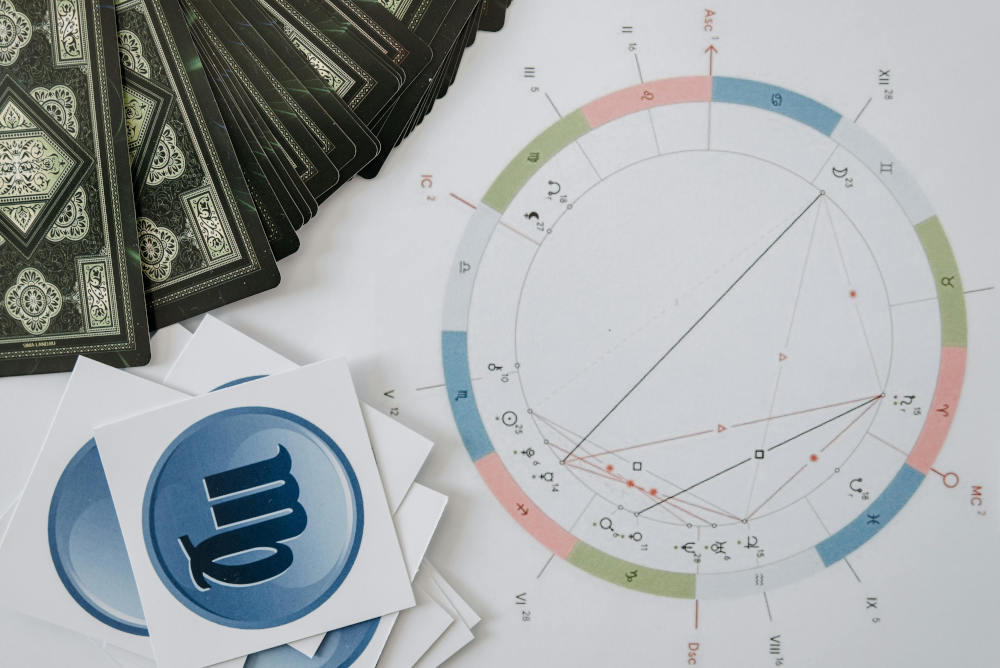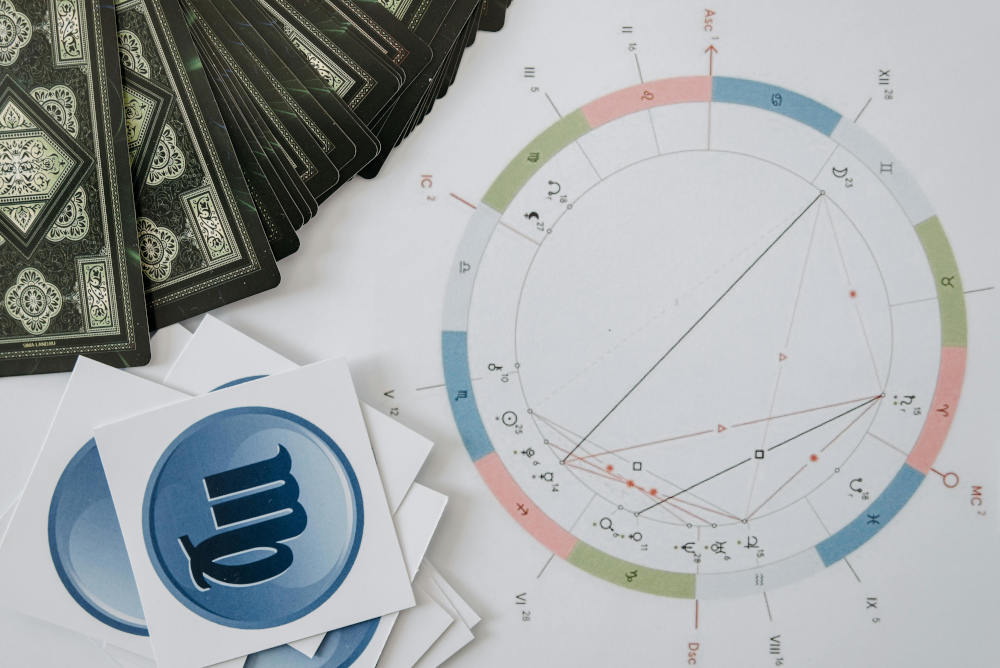
For centuries, people have looked to the stars for guidance, comfort, and insight. Astrology—the belief that the positions and movements of celestial bodies can influence human behavior and destiny—has captivated civilizations from Babylon to modern-day Instagram horoscopes. But the question remains: Is astrology real? Can it truly predict our personalities, relationships, or futures, or is it simply a pseudoscience built on coincidence and vague language?
This article explores the history, psychology, science, and spiritual dimensions of astrology to help you better understand its enduring appeal and the debate around its legitimacy.
1. What Is Astrology, Really?
Astrology is based on the idea that the positions of the planets and stars at the time of your birth affect your personality and life path. The most familiar form in the West is sun sign astrology, which divides people into 12 zodiac signs based on their birth dates. But serious astrologers go much deeper, creating detailed birth charts (natal charts) that map the positions of the sun, moon, and planets relative to the Earth at the exact moment of someone’s birth.
Different cultures have their own versions of astrology:
-
Western Astrology: Based on Greco-Roman traditions and tropical zodiac.
-
Vedic (Indian) Astrology: Uses sidereal zodiac and includes karmic influences.
-
Chinese Astrology: Centers on a 12-year animal cycle with elements.
-
Mayan Astrology: Focuses on sacred calendars and cosmic cycles.
Despite their differences, all systems share the belief that cosmic patterns reflect human patterns.
2. The Historical Roots of Astrology
Astrology has deep historical roots, dating back over 4,000 years. Ancient Babylonians were the first to systematically observe the sky and create horoscopes. The Greeks later refined these ideas—especially the concept of zodiac signs—and tied astrology to their philosophical views of fate and the universe.
In medieval Europe, astrology and astronomy were once considered the same discipline. Many great scientists, like Johannes Kepler and Galileo Galilei, practiced astrology. But as science evolved during the Enlightenment, astrology began to be separated from astronomy and was criticized for lacking empirical evidence.
3. The Case for Astrology: Why So Many Believe It Works
Despite scientific skepticism, astrology remains extremely popular. Millions of people consult their horoscopes daily. Why? Several factors contribute:
a. Personal Meaning
Astrology offers a sense of identity and explanation for traits, behaviors, and life events. It can provide comfort during uncertainty, helping people feel connected to something larger than themselves.
b. Patterns and Archetypes
Astrology is built around archetypes—universal patterns of behavior that resonate deeply with the human psyche. For example, Leos are described as confident and bold; Capricorns as disciplined and ambitious. Whether or not these traits are caused by the stars, many people identify with them.
c. The Barnum Effect
Psychologists have shown that people tend to believe vague, general statements apply specifically to them—a phenomenon known as the Barnum Effect. Phrases like “You have great potential but often feel misunderstood” are likely to resonate with anyone.
d. Synchronicity and Spirituality
Carl Jung, the famous Swiss psychiatrist, believed astrology tapped into the collective unconscious through synchronicity—meaningful coincidences that reflect inner states. To Jung and many spiritual thinkers, astrology isn’t about causality but about symbolic resonance between the cosmos and the soul.
4. The Scientific Criticism: Why Astrology Is Often Called a Pseudoscience
From a scientific standpoint, astrology struggles to hold up under scrutiny.
a. Lack of Empirical Evidence
Numerous scientific studies have tested astrology and found no consistent, repeatable evidence that birth charts can accurately predict personality traits, careers, or relationships. The most well-known test, the Carlson double-blind study (1985), concluded that astrologers couldn’t match people with their correct birth charts better than chance.
b. The Precession of the Equinoxes
The zodiac signs used in Western astrology were established over 2,000 years ago. Since then, the Earth’s axial tilt has slowly shifted—a phenomenon called precession—meaning that the constellations no longer line up with the traditional signs. For example, someone born under the sign of Scorpio today may technically fall under Libra astronomically.
c. No Mechanism of Action
Astrology offers no scientifically recognized mechanism by which planets or stars could influence a person’s behavior at birth. Gravity, magnetism, or radiation from distant planets is far too weak to affect human biology.
d. Confirmation Bias
When people read horoscopes, they often remember the accurate parts and forget the misses. This is confirmation bias, and it fuels the belief that astrology is working when in fact people are just selectively interpreting information.
5. Astrology as a Psychological and Cultural Tool
While astrology may not be “real” in a scientific sense, that doesn’t mean it has no value.
a. A Tool for Self-Reflection
Many use astrology the way others might use personality tests like the Myers-Briggs Type Indicator (MBTI) or the Enneagram. It provides a framework for introspection and personal growth.
b. Language for Relationships
Astrology can serve as a shared language to explore interpersonal dynamics, especially in friendships and romantic relationships. Comparing birth charts (synastry) can help people talk about compatibility and emotional needs.
c. Spiritual Connection
For many, astrology is a spiritual path. It connects them with the rhythms of the universe, lunar cycles, and ancient wisdom traditions. Even without scientific proof, this connection can be deeply meaningful.
6. Modern Astrology and the Internet Boom
In recent years, astrology has seen a massive resurgence, especially among millennials and Gen Z. Social media platforms like Instagram, TikTok, and Twitter are filled with astrology memes, birth chart readings, and zodiac-themed content.
Why the comeback?
-
Disillusionment with institutional religion: Astrology offers a spiritual alternative.
-
Desire for identity and self-understanding: Birth charts feel deeply personal.
-
Accessibility: Online calculators and apps like Co-Star and The Pattern have made astrology easy to explore.
Interestingly, this new wave of astrology blends ancient symbols with modern psychology, feminism, queer identity, and cultural commentary—turning it into a vibrant, evolving practice rather than a fixed belief system.
7. Is Astrology “Real”? A Balanced Conclusion
The answer depends on how you define “real.”
From a Scientific Perspective:
Astrology does not meet the standards of modern science. It lacks empirical evidence, testable predictions, and a clear mechanism of influence. Scientists largely classify it as a pseudoscience or symbolic system rather than a factual discipline.
From a Psychological and Cultural Perspective:
Astrology can be profoundly meaningful. It offers insight, comfort, and a sense of cosmic connection. Whether or not the stars “cause” events, astrology reflects how humans seek patterns and meaning in a chaotic world.
From a Spiritual Perspective:
For many, astrology is a sacred tool for aligning with universal rhythms and divine order. Its symbolic language speaks to the soul, not the microscope. In this context, “truth” is not always about facts, but about resonance and personal transformation.
Final Thoughts
Astrology sits at the intersection of art, myth, psychology, and spirituality. It may not pass the tests of physics, but it continues to thrive because it speaks to something deeper: our desire to find purpose, patterns, and connection in the cosmos.
So, is astrology real? Scientifically, probably not. But symbolically, emotionally, and spiritually—it just might be.
Was this article helpful to you? Please tell us what you liked or didn't like in the comments below.
About the Author: Alex Assoune
What We're Up Against
Multinational corporations overproducing cheap products in the poorest countries.
Huge factories with sweatshop-like conditions underpaying workers.
Media conglomerates promoting unethical, unsustainable products.
Bad actors encouraging overconsumption through oblivious behavior.
- - - -
Thankfully, we've got our supporters, including you.
Panaprium is funded by readers like you who want to join us in our mission to make the world entirely sustainable.
If you can, please support us on a monthly basis. It takes less than a minute to set up, and you will be making a big impact every single month. Thank you.































0 comments